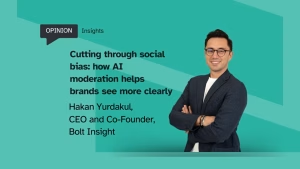By Ben Nicklen, Chief Operating Officer for workplace data analytics firm Tiger
It’s been over a year since the UK experienced its first lockdown due to the Covid-19 crisis. As well as the health and economic impact the pandemic has had, it’s also transformed the way in which we now run businesses, with teams making the mass move to working remotely.
And while people logged on from their kitchen tables or via their home offices, we saw a huge demand for unified communications and collaboration (UC&C) technology to help support us through a challenging climate. The rate at which people adopted savvy solutions in order to stay connected was rapid, to say the least.
There has been no question that intuitive digital tools have proved to be vital when keeping colleagues and customers communicative. They’ve ensured we remain productive in our day-to-day operations and also enjoy some form of ‘normality’ during a time where it’s been anything but.
Even though lockdown restrictions are gradually easing nationally, workforces will still be clicking to join their next virtual meeting and logging into online channels to keep in touch with managers and teammates.
By now we’ll have also all seen the huge figures reported by the video conferencing ‘giants’ – with Microsoft Teams and Zoom recording 200 and 300 million meeting participants in a single day, respectively.
And while this is the level of innovation we need to power towards the ‘workplace of the future’, what it’s also presented is another challenge for managers when unlocking and understanding their own UC&C data.
How leaders can make sense of their data
Only recently, leaders are discovering that, despite having a vast array of tools at their disposal, they’re not accessing crucial data. And, in turn, they’re unable to truly know how engaged their employees are, whether or not they require further training or support, and where operational improvements could be made in response to business performance insight.
In truth, it’s been difficult for companies because decision-makers had no other option but to act swiftly in March 2020, in order to equip their teams – leading to the immediate adoption of solutions to tackle the working from home conundrum. And for millions of organisations with scores of staff in their ranks, that is no mean feat to provide them with the devices and infrastructure to hit the ground running when away from the office.
And while the adoption of savvy UC&C tools – such as Microsoft Teams – has enabled workforces to log on and communicate in real-time, managers are now finding it a challenge to unlock the data they need to understand exactly how well everyone’s coping remotely.
What that’s ultimately presented is an intelligence gap for leaders who are attempting to retrieve enough insight that will help to form a complete picture so they can enhance business performance, support colleagues more, and continue to provide excellent customer service.
To do that manually, or without the correct analytics tools, is impossible especially when there are millions of participants attending conference calls every day – not to mention sharing screens and sending instant messages. That amount of insight – when left unlocked – is therefore lost and leaving organisations to operate in the dark.
Using solutions to empower employees – no matter where they operate
As hybrid working continues to become the ‘norm’ for many enterprises, it is truly vital that teams are now equipped with the tools to ensure they can make sense of their data in the context of their businesses. By analysing the volume and quality of colleague and customer interactions, organisations can bring their data to life and make sure they’re making business-critical decisions as a result.
Like many companies, we’ve benefited from utilising Microsoft Teams and have even launched a module to help businesses optimise licences and stop leaders from operating without the detail they need. However, also know how vital it is for collaborative solutions to work harder and identify employee patterns that might bring up wellbeing concerns, or analyse customer call quality so brands know where to make improvements, and provide additional staff training where relevant.
And even for the managers who haven’t been able to access real-time analysis that delivers the ‘bigger picture’, there’s never been a better moment to explore intuitive solutions further as more people opt for a hybrid working future. What modern-day leaders are demanding to stay ahead of the curve is something that provides a simple and intuitive ‘single-pane-of-glass’ platform to empower every facet of their business – from sales and marketing to IT to admin to HR and finance.










